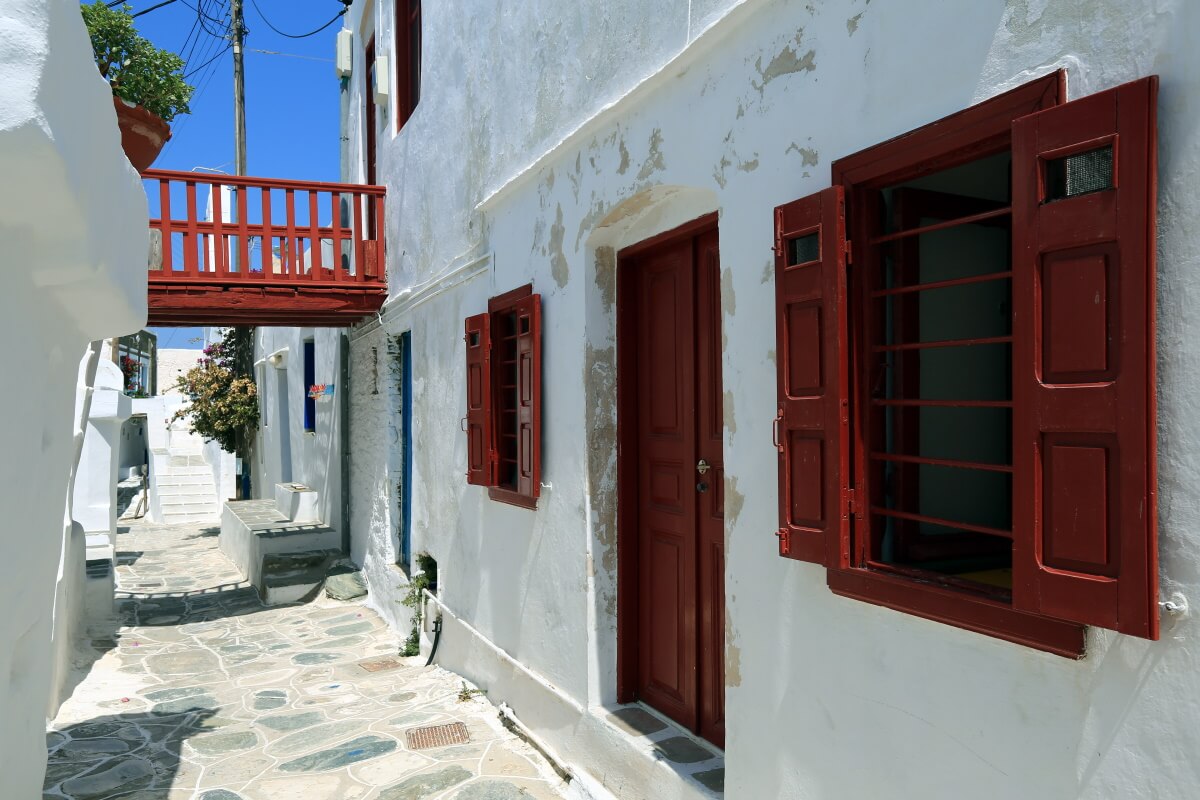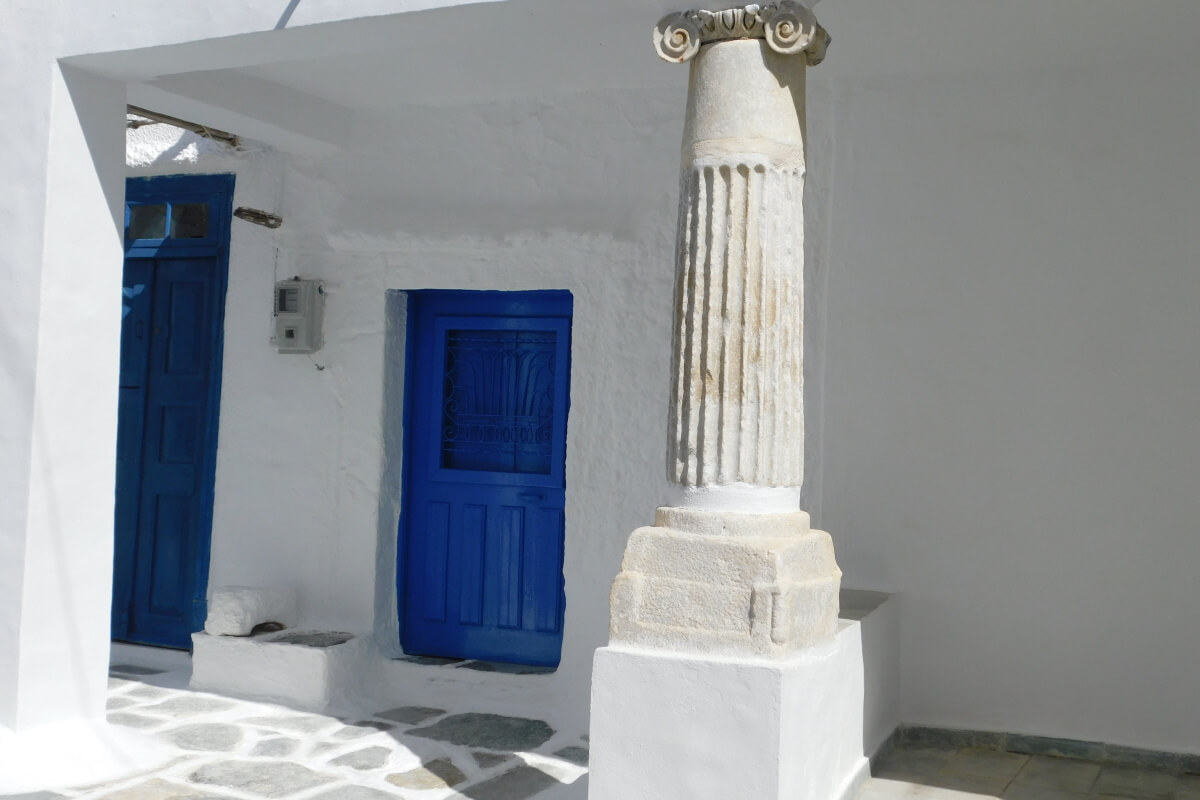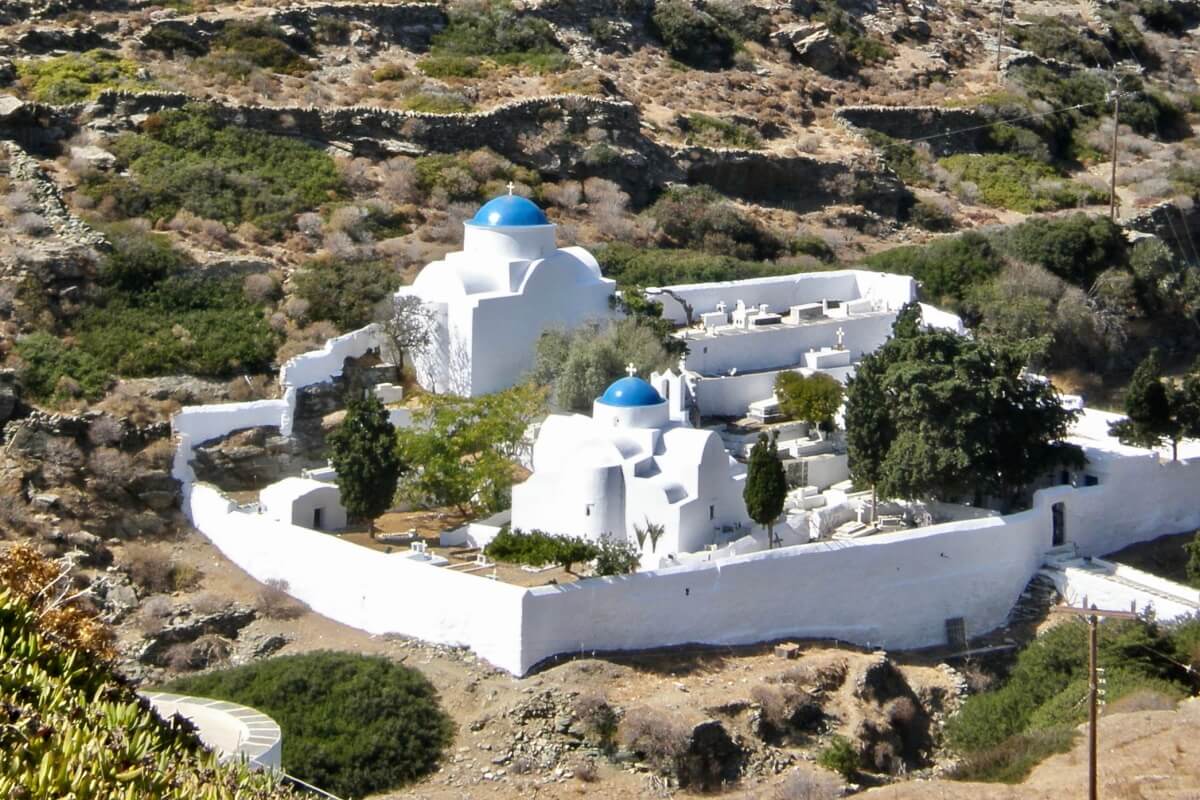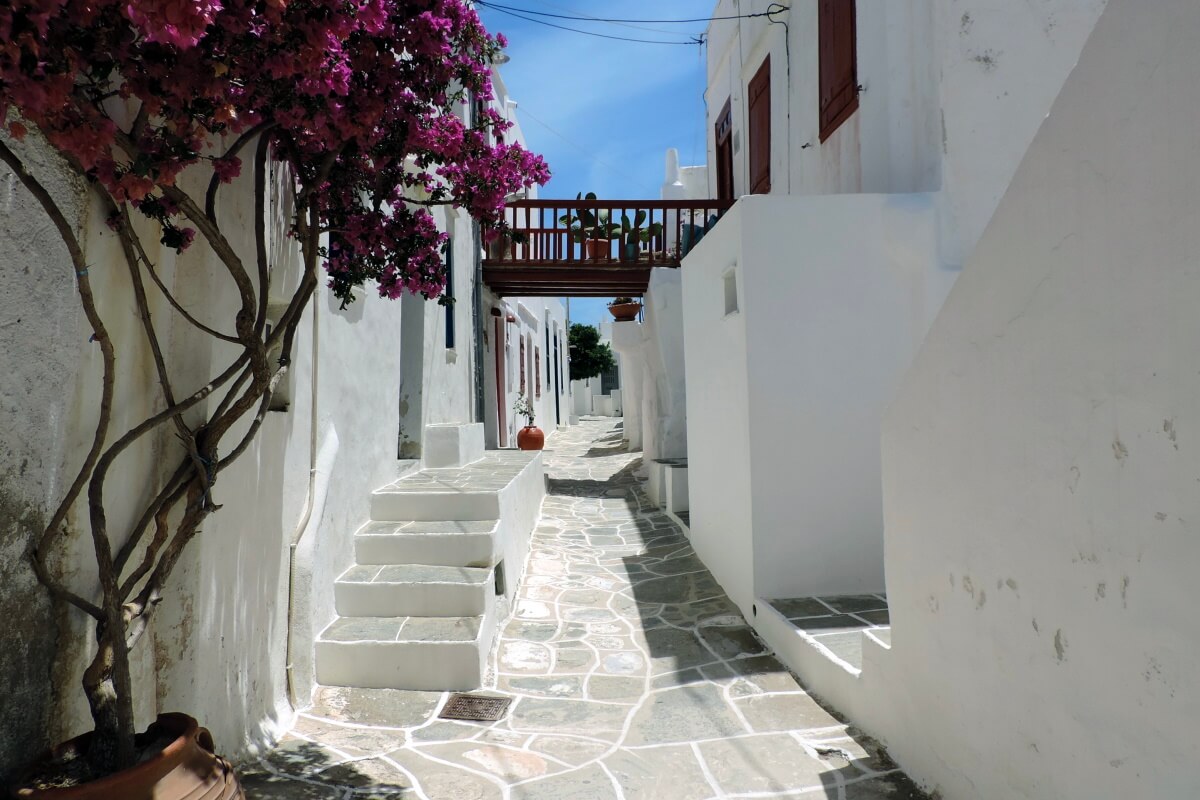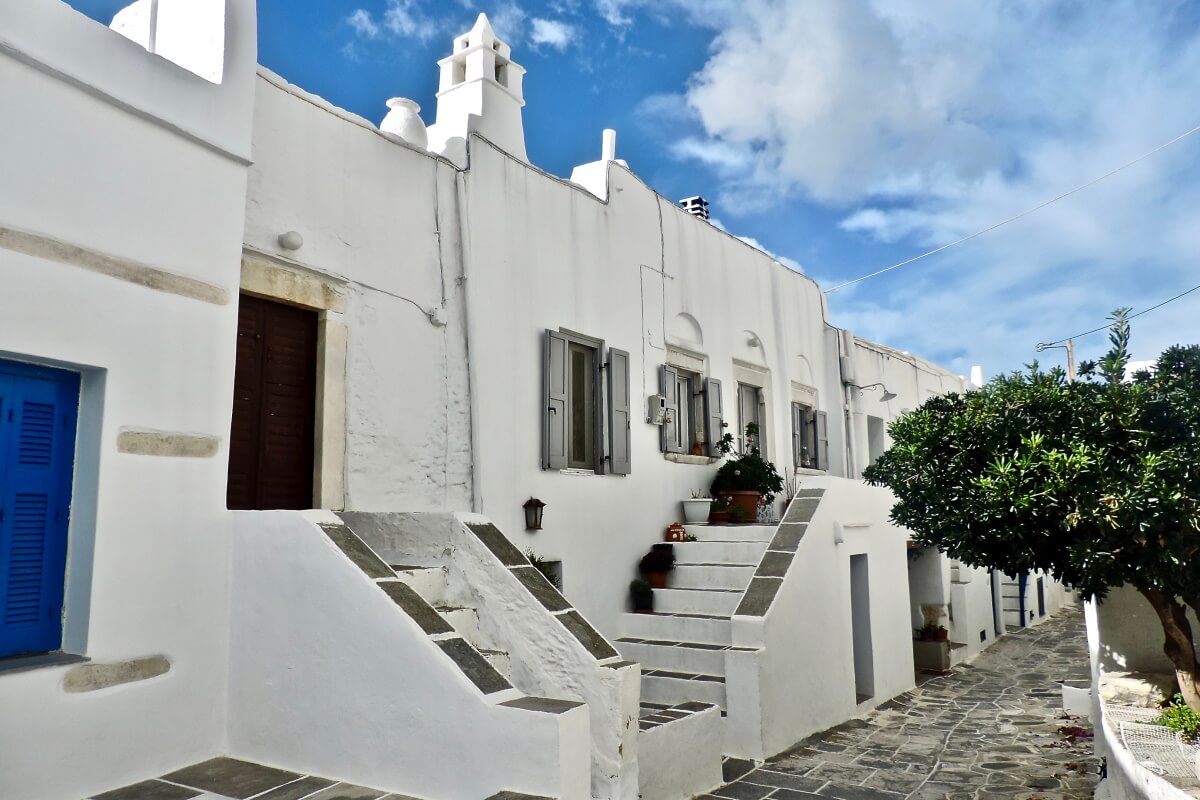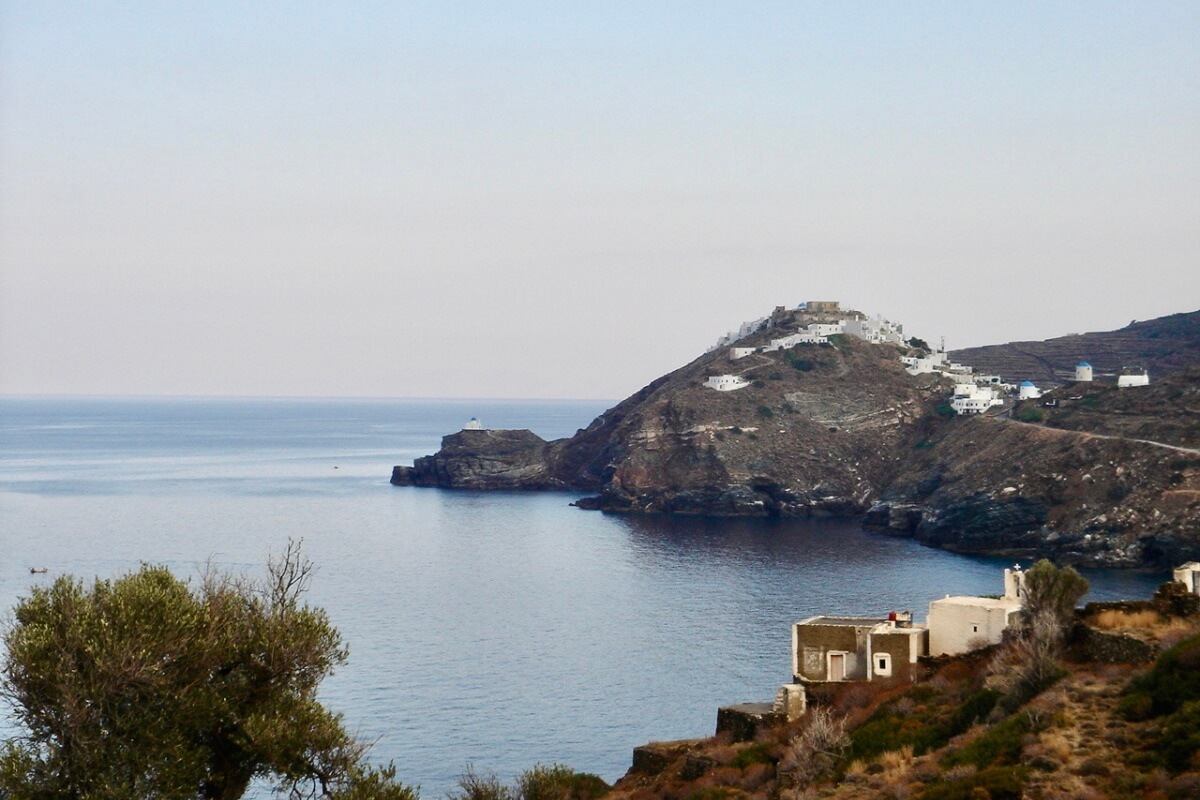Kastro
Kastro is the old capital of the island and the seat of the Archdiocese of Sifnos (6th-19th century). It is one of the most picturesque, beautiful, and the most important of the villages of the island from an archaeological standpoint.
This is the ancient ‘city’ referred to by Herodotus, which flourished in the 6th century BC, with a temple and a theatre dedicated to Dionysus, and grand marble public buildings. It has been continuously inhabited from prehistoric times (first settlements on the hill were in the 3rd millennium BC) to the present day.
The village's name comes from the fortress-like 'castle' formed by its buildings. The settlement has an ellipsoidal form, following the terrain, and has a defensive aspect, preserving unchanged its medieval (Venetian) fortified formation. Two defensive rings of buildings can be observed, each built close by the next, with mansion houses for the richer inhabitants in the inner ring where they had greater protection, and the houses of the poor in the outer ring.
The ruins of the ancient acropolis stand tall at the top of the hill (6th century BC), ancient columns are set in the walls of newer buildings, and there are Roman sarcophagi to be seen in the alleys. There are the six ‘lodges’ (gateways at the entrances to the village), 16th and 17th century chapels with decorated floors and many other details making Kastro a living open-air museum.
At the highest point of the village is the ‘katholikon’ cathedral church, and nearby stands a column bearing an inscription by Giannoulis Da Corogna dating back to the 14th century.
The Sifnos Archaeological Museum can be found in centre of the village, with exhibits (mainly sculptures and coins) from the prehistoric to the Roman era.
East of Kastro is the picturesque chapel of the ‘Eptamartiron’ (Seven Witnesses) standing on the rocks, where the panoramic view of the sea is breathtaking. Further to the north, the ancient path leads to Panagia Poulati, a designated area of outstanding natural beauty. Poulati, like Eptamartyron, is an ideal spot for diving off the rocks. West of the village, at the foot of Kastro hill, there is a small pebbled beach (the island’s ancient harbour), known by the name Gialos or ‘Seralia’ from the word seraglio, meaning palaces, that were once to be found there.
Kastro opened the first known school on the island (in the early 17th century), and later established the famous School of Panagia Tafou (the Holy Sepulchre) also known as the ‘Seminary of the Archipelago’ (from the mid-17th century). On the same site today stand the twin churches of Agios Stefanos and Agios Ioannis Kalyvitis. Great teachers and priests were graduates of the seminary, including Nikolaos Chrysogelos (later a teacher at the same school and the first Minister of Education of the Modern Greek state), as well as forty-eight bishops and two ecumenical patriarchs.
Kastro is the birthplace of the university professor and academic Georgios Maridakis (his marble bust can be seen in the courtyard outside the Theologos chapel). It is also the birthplace of the former President of the Supreme Court of Greece, Antonis Zilimonos.
Kastro today offers a few rooms to let, tavernas, bakeries, cafés and bars, and the beach front (Seralia) has a few tavernas and rooms to let.


